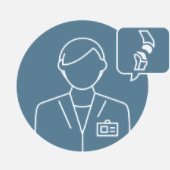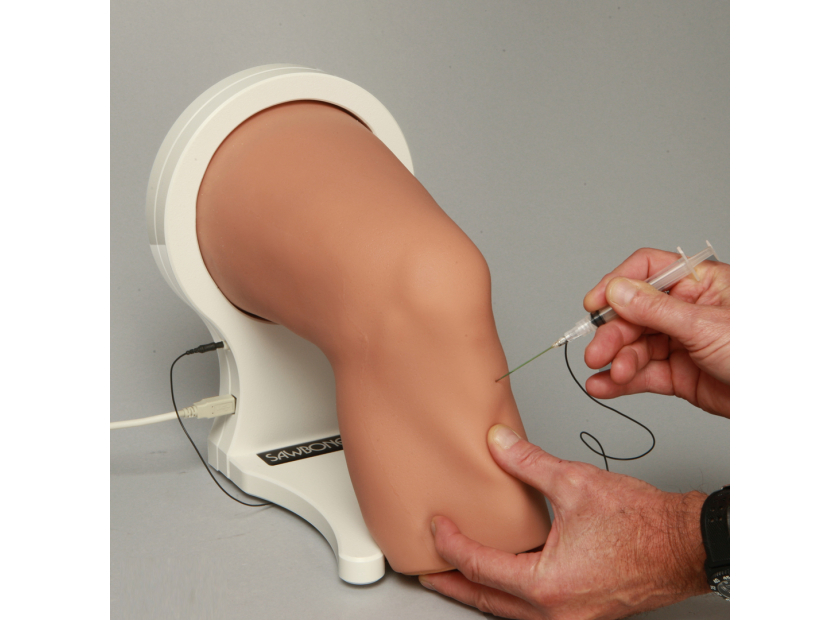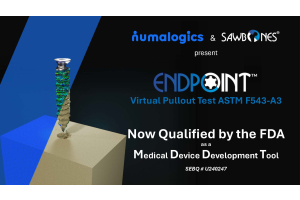The Importance of Haptic Feedback Models in Medical Education Tools
Haptic feedback models may sound complex and high-tech, but they've been around in some form or another for decades. Early efforts focused more on entertainment or alerts; over time, however, it has become prevalent across many different industries. One segment where it is particularly valuable is in medical training.
The ability to guide trainees as they work on new procedures helps them develop more precise muscle memory. Unfortunately, instructors can't always be over their students’ shoulders for every moment of cadaver training, nor is the technology always available to guarantee they're taking the right approach. Haptic feedback models provide a method for guiding residents without the need for cadavers or instructor-directed training.
What is Haptic Feedback?
Haptic feedback—very broadly—is communication through touch. We see its use in everything from smart toothbrushes to mobile phones and game controllers. The object will vibrate or emit some other sensory output as a signal that action is needed. In medical training, this type of feedback is highly beneficial.
In traditional medical education, students work on models or cadavers. They will come up against many treatments where they're forced to work in an enclosed space. As a result, they can't guarantee they're making all the proper movements to accurately accomplish the goal. This becomes a problem because they may develop incorrect muscle memory for procedures.
This is where haptic feedback models come in. As the trainee practices, they receive tensile signals from the model that help them determine success or failure. These small signals allow them to course correct, update their technique, and improve their muscle memory for a wide range of procedures. It is, by far, one of the most valuable features in medical education models.
6 Cases Where a Haptic Feedback Model is Useful
Haptic feedback models can be found through all branches of medical training, from early classroom lessons to continuing education for physicians. While its uses are extensive, here are six cases where haptic feedback is indispensable.
Injections |
Needle aspiration |
Arthroscopic surgeries |
|
Injections are perhaps the broadest category where haptic feedback models are useful. Pain control injections to the facets in the spine, subacromial injections for joint conditions, and cortisone shots to relieve inflammation all require precise placement. Intravenous injections and intramuscular injections are also both common in skilled nursing and require extensive training to minimize pain for the patient. |
Needle aspiration training is simply the opposite of injections. The resident is attempting to use a needle to remove something, whether they're pulling fluid from a joint for pain control or material from a suspicious cyst for testing. Haptic feedback helps them guide these fine-point needles to the right location. Realistic fluid removal also helps them understand what to expect during these treatments. |
Arthroscopic surgery training is a massive area of opportunity for haptic feedback. While cameras may help to guide residents as they complete the surgical procedures, they also need to understand the right motions and techniques to use. Haptic feedback helps them to understand how to maneuver their instruments to complete the needed steps without causing unnecessary damage or removing pieces they should not. |
Closed fracture setting |
Cardiovascular procedures |
Neurosurgery |
|
Fracture reductions can be a challenging training area as early experience comes in the form of bone models. However, when the resident must complete this procedure, they won't work on bone alone. They will have to close a fracture they can't see. Tactile knowledge is very important here. The resident must know what sensations to expect as they set a fracture they can't see with minimal pain to the patient. |
Any work around the heart is a challenge. Consider the vena cava. These essential veins have diameters that max out at 20 millimeters. It's also a challenging area to visualize accurately in medical models. Even the slightest twitch could cause irreparable damage. Haptic feedback in cardiovascular models helps residents understand the limitations of working in this space and practice procedures with greater care and precision. |
Haptic feedback is important in neurosurgery procedures not just for its immediate impact, but for how a change in one area could affect nerves throughout the body. A good model will show residents how a change in one area can cause a reaction in others. It's also essential in orthopedic procedures, where a surgeon may need to work around delicate spaces—like the spinal cord. Haptic feedback helps them understand the risk of errors. |
These are only a few of the places where haptic feedback models help to improve medical training. This feature has applications across specialties, from skilled nursing to sports medicine and major surgery. The right model can help residents develop muscle memory and strategies for approaching procedures that will improve patient outcomes.
Sawbones offers a wide range of haptic feedback models for various levels of medical training, from beginner to continuing education. For more information on our offerings or to talk about custom training models, contact us at 206-463-5551.

If you're seeking something you can't find on our website, our sales team is happy to help. We can either direct you to the right model or provide a free quote on the right custom project to meet your needs. Discover options with our clear bone models, laminated blocks, custom displays, or other machining projects.








